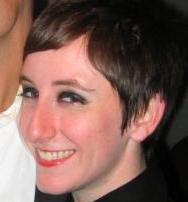One of the goals here at CW's American Indian Init. is to use tactics of delegation to involve Native peoples who were historically mentioned in the records and involved at CW in primarily the 1760s up to just after the Revolutionary War. The Meherrin tribe is a small, state recognized group who historically fought alongside various groups (Cherokee, Shawnee) at Williamsburg during the Revolution. The Meherrin who visited were friendly and very willing to share their experiences and opinions about being Native in the Southeast.
This was my first time working with a community of Native peoples, and it was an overwhelming and powerful day for me.
Here is a link to their tribal website : http://www.meherrintribe.com/
So, we invited a delegation consisting of Chief Lewis and various (often family members) other community members. Seven came in all, anxious to learn more about relationship potentials with CW and their historical interactions at Williamsburg.
We started out taking a tour of the costume design center (CDC) at CW. I had yet to go here either, and this was a very rare (they rarely allow tours) chance to explore this impressive and amazing center that creates all the clothing that interpreters and actors wear at CW. We were given a tour by Tom, the head of the department (I believe it's Tom, I've met so many people lately...). We saw everything - from dry cleaning to where they loan out the clothing, to the bar codes on each article, to the racks and racks of buttons, lace, ribbon and fabric...the conservation area, etc.
Tom presented a selection of articles related to Native life at CW and in the 18th century to share with the Meherrin's. We saw pieces that were created for a character that is represented during black history month - a slave woman who is kidnapped by Indians (not sure what tribe), is assimilated into tribal life, is traded back to Williamsburg, returned to her owner, and she remains assimilated as an Indian - wearing traditional clothing, etc of the period (which is heavily European actually). It was quite exciting! We also got to see the first of many trade shirts which are being created for Native interpreters. Chief Lewis received his, which he would be wearing in filming later in the day.
After CDC we went to Collections, where the department showed us a pair of 18th century moccasins (similar to what the Meherrin's could have historically worn), and a very rare (one of 6 in the world) slave halters.
I was able to take some pictures, you'll see those farther down.
After collections we went to PP&V for the filming of a scene featuring Chief Lewis! Chief Lewis donned his newly made trade shirt to be involved in a scene featuring Daniel Boone, being adopted into a Shawnee family. The Chief got to bath, apply paint to and "pluck" Boone. Electronic Fieldtrips are ways for people who can't necessarily make it to CW to learn about history connections at CW and beyond. These are DVDs and internet programs that schools use to educate kids. The highest showings are in California and Oklahoma, making Native history a strong priority in the programs. CW prides itself on bringing Native people in to play Native peoples, and Chief Lewis was quite excited to be in the show!
The EF that he was working on is called "Westward!" and tells the story of Daniel Boone.
After a very long day, Buck went out to dinner with the Meherrins and Preston and I hooked up for dinner.
It was a successful day of learning, exploring and educating. It'll be great to see where things go with the Meherrin's.
I did get opportunities to speak with members of the community while Chief Lewis was filming, as we sat in the green room. They shared horrible stories of racism. One of the elder members of the group stated that going to school in the 60s in North Carolina - it was horrible, and that her mother had to meet her at the bus stop everyday or she'd come home bloodied and beaten. She went to an all black school - the Native experience in the African American contemporary south, an experience rarely discussed or documented.
One of the younger Meherrins stated that "It's better to be black then Native in North Carolina, at least blacks have a place there." It was quite an eye opening and powerful statement, I'm still trying to let it sink in.
One of the women spoke of the horrors of having crosses burned on her yards as a child. Another Meherrin spoke of racism, discrimination, and the struggles of being racially profiled by cops.
It was an eye opening experience, and something I haven't heard much about. It's painful to hear...
Regardless, here are some photographs from our trip to CDC. Thank you to the Meherrin people for visiting us, letting us take them into our world (my new world!) and thank you for being so open about your life experiences. I look forward to seeing you again in CW and beyond!
A member of the collection team (in white lab coats) shows 18th century Iroquoian moccasins to members of the Meherrin tribe.


All the objects, especially the moccasins, were well documented by the Meherrin. These photos will be inspiration for regalia making, historical documentation, and also serve as strong connection with their cultural heritage.


Buck (far left) explains the history of the slave halters. This rare object is one of six (we believe) in museums worldwide. A fragile item used by Iroquoian tribes to transport slaves.






No comments:
Post a Comment